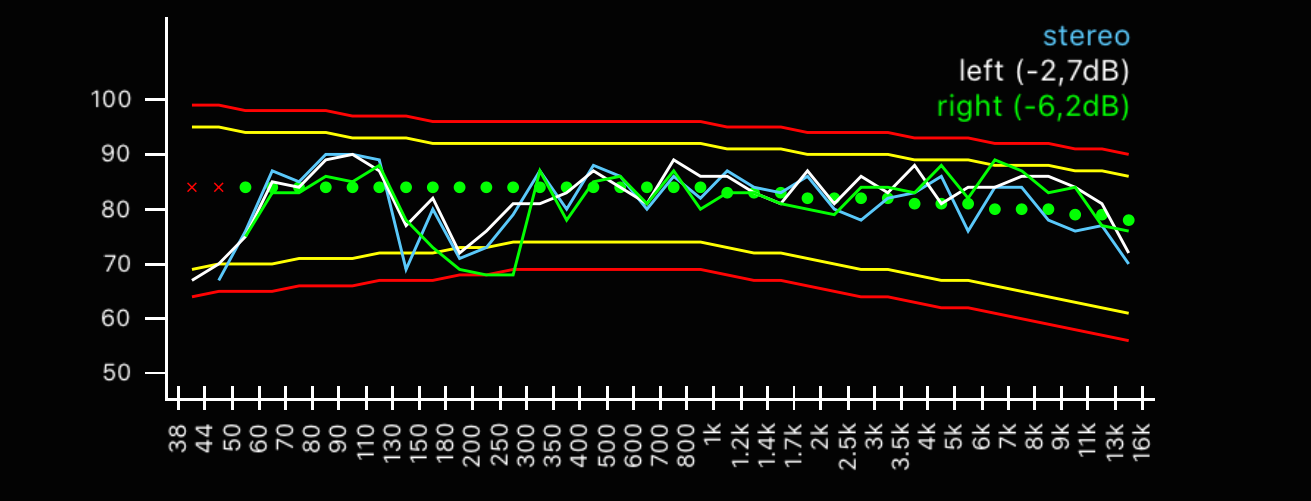
Simple pleasures
During the last weeks, I enjoyed some 300 surplus LPs from a friend. Very nice ones! Browsing through them with a minimalist vinyl setup: turntable, solid state phono- and chipamp into Betahorns.
I am spoiled by the sound of good tube amplifiers and elaborate setups. But this simple system provided as much fun in late evening afterwork sessions as I might have wished. Each time, just minutes after plugging in, the music’s intensity prevented any thoughts about system sound quality. No 30 minutes of tube warm-up. Start and enjoy.
It also uses little power to run: maybe 5 watts for the turntable, 2-3 for the phono stage and same for the chipamp driving the horn speakers. Say, 10 W total. Good for the environment, and during hot summer nights.
Comparison
My usual tube based system is relatively power efficient, drawing about 100 W playing vinyl and around 150 total to replay files. A lot of gear is involved, and takes at least 30 minutes to sound good, but hours for best performance. The digital clocks even 1-2 days under power to settle.
Does it sound better? Of course. More of everything, including listening engagement. Is it worth the effort? Not if I return home after work around 9 pm, with just 1-2 hours left for listening. The simpler vinyl setup described above sounds about equally good for the first 30 minutes, and may loose some 20-30% of subjective quality of the warmed-up tube system. Simple pleasures.
More comparisons
Many years ago a friend wanted to throw away a pair of small Telefunken loudspeakers, which still looked good for use. Upon my question he said they don’t sound good, too bright. I decided to have a look into and found one nice 8 inch Seas Alnico bass driver and a yellow old Philips tweeter mounted into each sealed cabinet. Plus a simple crossover.
Had a listen – yes, too bright. The tweeters measured some 2-3 dB too hot, easily compensated with a resistor change in the crossover. Next day they went into my son’s first „Hifi“ setup. Sonic Impact class D amp with some parts exchanged, and a cable to connect his phone.
Comparing this to bluetooth systems that cost 500 Euro and more was a blast. No chance for modern technology!
And he stated that this nice, small systems sounds much better than his good quality headphones.
The question
Has the quality of consumer sound reproduction at all improved during the last decades?
I am convinced that well selected second hand Hifi components outperform most modern „wireless“ bluetooth equipment.
The availability of all music anytime anywhere … does it lead to higher satisfaction?
The next generation of cellphones year by year, fast aging batteries (ever seen a good quality „wireless“ loudspeaker? Or do they just replace the wire from the amplifier with a wire to the power outlet – for what advantage?) – is this all that progress has to offer for the music lover?
Personal experience
leads me towards simplicity – which, if well done, provides maximum transparency. That again rewards me with pleasure when listening to acoustic and „electronic“ music.
I tend to believe that modern „electronic“ music is influenced by the poor quality of the reproduction technology used by most listeners. After a while of listening to music performed on acoustic instruments, by top artists, I feel little need for „Bad Guy“. Those acoustic vibes refuel me with energy for the next day. And while only my ears are involved, I feel much better after such sessions than anything yet seen on Netflix.
Of course, if my system would lack resolution and dynamics, details of timbre and the sheer beauty of sound would get lost. Old mono recordings of Cziffra might sound worse than neighbourhood piano lessons. Then the sterile sound effects of some contemporary „electronic music“ could seduce me.
Sustainabliity
How about a system that has already served for decades, saved from the junkyard for many more years of use? Of course we need to take care not to burn down the house with exploding old electrolytics inside antique amplifiers. Still, maybe with the help of friends to refurbish it, a nice system can be assembled with old speakers, amps and turntables.
I asked my son to test his Telefunken system with an upcoming version of TestHiFi. He has no experience with test equipment.
5 minutes later the results where on the screen. See the picture on top for a basic frequency response. It’s located in a small room, with similar distance to floor and walls – therefore the lower midrange dip around 120 – 250 Hz. Besides that, very nice!
How about using everyday technology to check if ancient junkyard stuff is worth to be restored?
To sum it up:
I would like to see more high efficiency, simple and long lasting stuff. And less fast aging digital garbage.